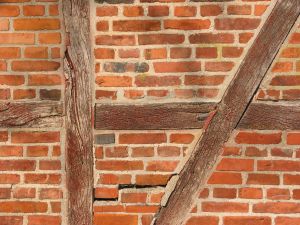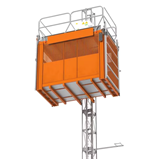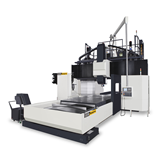Using more sustainable materials such as timber in city building construction is just one of the hundreds of ideas explored in the new book edited by UniSA’s Professor Steffen Lehmann and Dr Robert Crocker.
Designing for Zero Waste: Consumption, technologies and the Built Environment is the first in a series and narrows in on themes around creating a sustainable city by implementing an array of construction and design techniques/ideas.
Professor Lehmann says Australian cities, including Adelaide, have many poorly designed and inefficient buildings and he is currently working on a research project that would see more timber used in construction.
"My big passion at the moment is about constructing buildings differently in the future," Professor Lehmann said.
"Instead of steel and concrete we would have timber construction that goes up seven, eight or even ten stories – that would store carbon and provide the opportunity for timber to replace these traditional carbon intensive materials.
"We can build ten storey buildings for urban use in the city that have no steel or no concrete except for in the footings. This is possible and desirable.
"We can reduce the damage and the impact of construction by having carbon positive buildings and that’s very, very exciting. We have the opportunity to reverse some of the environmental damage our existing buildings have caused."
Professor Lehmann says the timber used in such constructions would be of equal strength to the material it replaces and wouldn’t mean damaging the environment.
"It doesn’t involve cutting down rainforests with pristine timber in Indonesia – we are not talking about that type of timber. This timber needs to come from a sustainably harvested source with a 12 year cycle, so we could set up a green supply chain with Mt Gambier pine trees for instance," he said.
Social sustainability is one of the key themes explored in the new book which develops ideas on how future cities can consume less and function more efficiently.
"The centre is very interested in cities and how to transform cities to use fewer materials to produce less waste and use less energy, water, and to grow food locally. Then if you add a greater focus on recycling - that is my idea of a more sustainable city," he said.
Professor Lehmann says a lot of the waste issues faced in urban areas are centred around the attitudes of people who consume too much.
"Why do people want a second fridge? Why do people want big cars like hummers? Why can’t people drive less? We see a lot of young people have a limited relationship with nature and do not value tree planting," he said.
"Attitudes are changing too slowly, in fact we see people wanting bigger houses to fill with stuff. We now have the largest homes in the world – bigger than the US – and they are badly designed and heavily dependent on air-conditioning. These are things we can change but they require education and attitude change as well."
The Earthscan Series on Sustainable Design’s first book - Designing for Zero Waste: consumption, technologies and the built environment will be launched at 6pm Thursday, February 23 at the Allan Scott Theatre – City West Campus.



-160x160-state_article-rel-cat.png)

-160x160-state_article-rel-cat.png)





-160x160-state_article-rel-cat.png)
-160x160-state_article-rel-cat.png)













